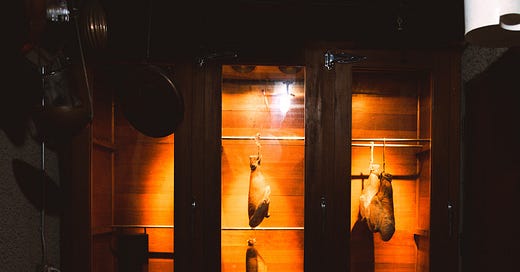This exploration of Prosciutto will unfold over the next 14-18 months. We have chosen to document each step in the process so that you can accompany us on its odyssey from farm to plate. On January 12, we received 6 plump pork legs from our friends at Heritage Foods. The pigs were 50% Berkshire mixed with Tamworth and Duroc breeds. They were born and pasture-raised on a farm in Missouri and harvested at 7 months of age. Three days later, we started the process. This will be the first of several posts that include the steps along the way: Boning, Trimming, Salting, Hanging, Molding, Washing, Trimming, Aging, Sealing, and Testing.
A word of caution. This is written for those of you who make your own salumi and have the means to refrigerate and cellar it. Of course, to lovers of prosciutto who are interested in deepening their understanding of how it is made, we hope you will find the following posts instructive and enjoyable.
Unless you have direct access to a local, whole animal butcher, finding a leg is the first step. Seek out a whole animal butcher in your area.
Boning & Trimming
Prosciutto is one of the icons of Italian food and culture. In the making, prosciutto is a complex and lengthy process that slowly evolves into a singular taste that defies one to find its depth. Italians put it plainly–“To make prosciutto, you need three essentials–“pig, salt, and time”. This sounds easy enough, however, god is in the details. While much is made, justifiably, of the pork's quality and the practitioner's skill, it is TIME that determines the transformation of artless flesh to divine ham.
Prosciutto calls for a mature animal, not less than 11 months of age, pushing 400 pounds on the hoof with well-formed muscular mass, deep pink to red flesh color, and alabaster fat. An animal of this size yields ideal legs of about 28 pounds each after deboning and trimming.
Keep reading with a 7-day free trial
Subscribe to Notice! to keep reading this post and get 7 days of free access to the full post archives.





